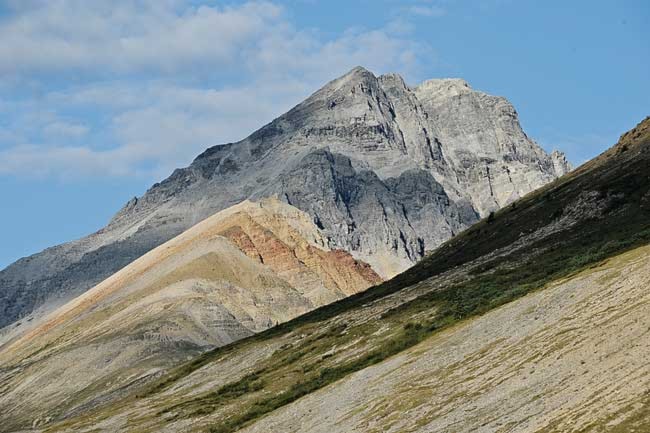The Peel Watershed Regional Land Use Plan could be signed-off by November, if an ambitious timeline announced on Friday proves true.
But, for this to happen, First Nations and the Yukon government must compromise. They have to decide how much of the vast, 77,000-square-kilometre, Scotland-sized swath of land in northeast Yukon to protect.
So far, neither party has budged from their position: First Nations want it all protected, while the territory wants a plan that’s more friendly to mining than the current draft, which would ban development in 80 per cent of the region.
More modest compromises have been made. They’re laid out in a joint letter by all parties to the planning commission, written last month and released on Friday.
The territory has agreed to a tighter timetable. It initially wanted an additional year to reach a joint position on the Peel plan.
First Nations, meanwhile, have joined the territory’s call for a simpler plan than the commission’s. They note the draft plan divides the region into a patchwork of 24 distinct units and would require up to 19 subsequent plans. They see this as unwieldy.
The parties also make it clear to the commission who they believe ought to have ultimate say over how to interpret the land-use plan: them. The Yukon Land Use Planning Council “may provide assistance” in a land-use ruling, but governments expect to have final say, and they’d like these powers enshrined in the final plan.
This would put the planning council on par with the Yukon Environmental and Socio-economic Assessment Board, which makes recommendations that the territory overrules as it sees fit.
Under the new timeline, the commission would prepare a revised plan by early July. Community meetings would be held from then until October. A final plan would be released by November.
That’s presuming that all parties agree to a final plan. To get there, a yawning gap must be bridged.
“In our view, none of the land within the watershed should be open to potential industrial development,” states a joint letter by the First Nations, released yesterday. The sole exception to this rule would be the land that borders the Dempster Highway.
The Yukon government never spells out how much of the Peel it wants to see protected in its letters to the commission. But it’s calling for “a more balanced plan,” that would put less emphasis on conservation, and offer greater tolerance towards mining.
Uranium deposits have been discovered along the Wind River, which also happens to be a favourite destination for backcountry paddlers.
There’s oil and gas in the Peel plateau. And Chevron owns the massive Crest iron deposit along the Snake River.
The government questions the amount of land to be made off-limits to development. “More work” needs to be done to “develop a rationale” to protect these areas, according to the territory.
Nonsense, reply conservationists in a release issued today.
“How much more rationale do you need?” asked Karen Baltgailis, executive director of the Yukon Conservation Society. The planning commission spent several years studying the Peel, she noted.
And three-quarters of Yukoners who attended Peel consultations or wrote submissions supported protecting the entire watershed, noted the Tr’ondek Hwech’in in their letter to the commission.
Another 10-15 per cent supported a compromise, and three to five per cent supported no protection
A recent Datapath poll, meanwhile, showed that Yukoners are 75 per cent in favour of a large area in the Peel Watershed that is free from industrial activity.
The government’s apparent dismissal of these results prompted Gill Cracknell of the Canadian Parks and Wilderness Society to wonder: “could it be that the government spent all that money and then didn’t listen to what people said?”
Another contentious matter is road access. The draft plan bans roads in the Peel. First Nations agree: they oppose the use of any vehicle larger than a snowmobile in the region.
But the territory says a ban on surface access is “not a workable scenario.” Managing road access through pristine wilderness is “challenging, but not impossible.”
This is “the same lack of vision which has degraded wilderness and cultural values everywhere it has been tried,” said Mike Dehn, executive director of the Canadian Parks and Wilderness Society’s Yukon chapter.
To appease miners with claims in the Peel, the First Nations recommend the territory consider several “creative solutions.”
One is to waive the requirement that miners periodically work their claims in the Peel, as the territory has already twice done.
Another is to allow miners to swap Peel claims for claims outside the region. A third option is to offer work credits to those who give up their Peel claims.
The First Nations support mining, they say - just not in the Peel.
“This area is sacred to our peoples. It should not be subject to hasty exploitation without thinking of the legacy we leave for future generations or how we respect the value of our lands beyond resource extraction.”
In response to warnings by mining boosters that banning industry from the Peel may scare off investment across the territory, the First Nations note today’s mining boom seems to be doing fine, despite the current staking ban in place in the region.
Contact John Thompson at
johnt@yukon-news.com.
